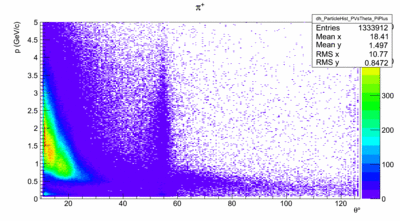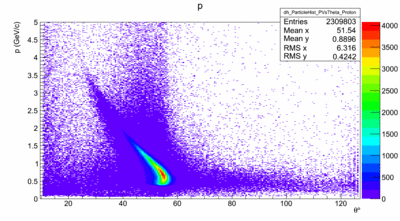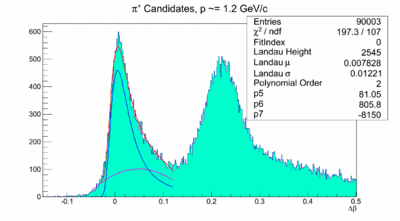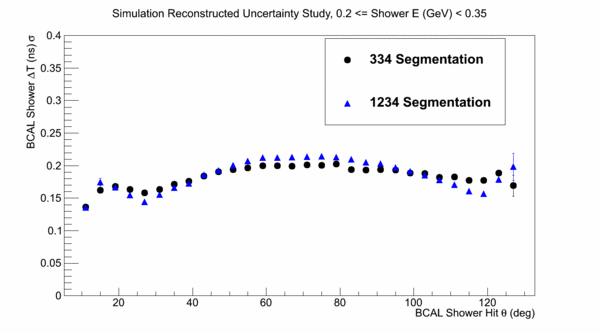Mattione Update 11072011
From GlueXWiki
Contents
Procedure
- Reconstruct π(1600) -> b1π events with t-slope = 2.0 using both the 334 and 1234 segmentations
- Plot Δβ vs p for π+ candidates to see proton, π+ separation.
π(1600) -> b1π Events
p vs. θ
- p vs. θ
- NOTE: time improvement only at forward angles, so will be negligible for protons in this reaction.
π+ BCAL Δβ vs p
Δβ = βp - βt = p/sqrt(p*p + m*m) - path/(c*TOF)
- π(1600) -> b1π Events, π+ Candidates, BCAL Δβ vs p, 334 Segmentation
Problems
- π+ Reconstructed BCAL Time Resolution Sample dE bin:
- Expect to see significant resolution improvement between 15 < θ < 35.
- NOTE: For 1234 Scheme: the shower time was smeared by: σsmear = sqrt(σ2t_1234_Target - σ2t_334_NoSmear), where σt_1234_Target = σt_334*Improvement_Ratio, Improvement_Ratio = σt_1234 / σt_334
- π+ BCAL Shower Δt Sample θ bin, Time Smearing Disabled:
- Δt = t_reconstructed - t_true
- Instead of a spike at zero, the long tail is due to the hit clustering.
- Will decrease 1234 time smearing to match expected resolution improvement to 334.
Reference
- Fit the results of David's study: Fit γ BCAL σt_1234 / σt_334 vs. θ in dE bins: show significant (> 10%) timing improvement is between 15 < θ < 35.
- Don't trust fits at low-θ, so linearly-interpolate between 12 and 16 degrees.









